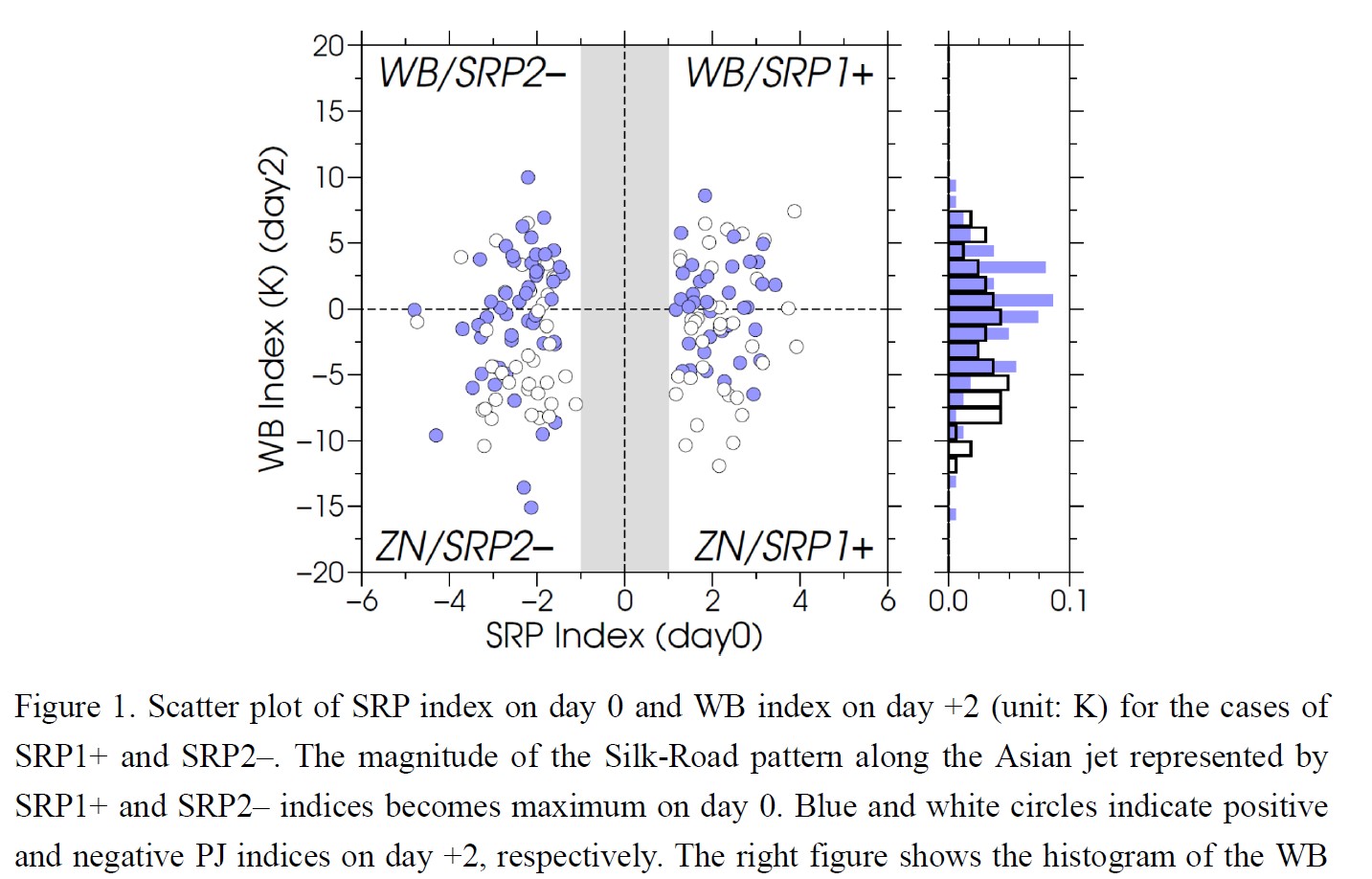Graphical Abstract
Takemura, K. and H. Mukougawa, 2023: What percentage of Silk-Road pattern trigger Pacific-Japan pattern through Rossby wave breaking? J. Meteor. Soc. Japan, 101, 5-19.
https://doi.org/10.2151/jmsj.2023-001
Graphical Abstract
Plain Language Summary: The rate at which the Silk-Road pattern (SRP) with Rossby wave breaking (RWB) near the Asian jet exit causes the Pacific–Japan (PJ) pattern in boreal summer is investigated. The presence and absence of RWB for each detected SRP case are evaluated by positive and negative wave breaking (WB) index, respectively.
Highlights:
- In the composite of SRP cases with RWB, a wave train associated with SRP appears over Eurasia, which is accompanied by the RWB near the Asian jet exit. The RWB promotes enhanced convection on the southern side of the RWB region due to the intrusion of upper-level high potential vorticity toward the southwest, resulting in the formation of the PJ pattern. Approximately 60–70% of the SRP cases with RWB are accompanied by the PJ pattern.
- In the case of SRP without RWB, the composite represents a wave train structure over Eurasia but shows neither enhanced convection south of the RWB nor PJ patterns. Approximately 40–50% of the SRP cases without RWB are accompanied by the PJ pattern.
- The presence of RWB increases the formation rate of the positive PJ pattern by a factor of 1.2 to 1.7, indicating that the RWB plays an important role in the excitation of the PJ pattern.







